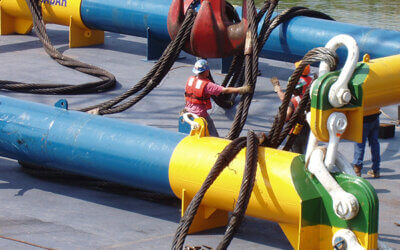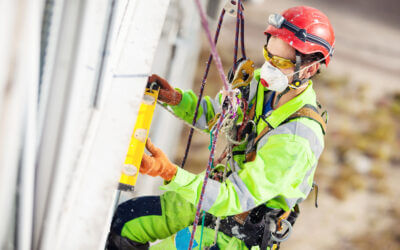Companies in various industries rely on lifting gear and rigging equipment to move cargo on a job site. Employees must be qualified to work in these types of environments, and this may include certification that demonstrates their understanding of the engineering principles involved in rigging. They must also be comfortable with the tools necessary for particular rigging jobs. Here are just a few of the most common types of rigging supplies a worker may encounter on the job.
- Wire RopeNylon ropes just aren’t going to cut it when it comes to lifting heavy cargo. Wire ropes, on the other hand, are designed to carry thousands of pounds. That being said, not all wire ropes are the same. Single size ropes comprise wires that are all the same size wrapped around one another. While these are substantial for some applications, ropes that are made of wires of varying thicknesses are generally able to hold greater weights. More specifically, a small number of thick wires will be stronger than a large number of thinner wires.
-
SlingsIn order to transport heavy cargo safely, you need to have the right slings in place. There five primary types of slings, including endless, single, two, three, or four leg slings. Web slings are also fairly common because they stretch out to cover more massive cargo.
-
HoistsA hoist can be manually, electrically, or pneumatically driven to lift or lower a load, and may use a chain or wire rope as its lifting medium. Hoists have varying load capacities, so their construction will depend on their intended application.
- Safety Gear
The above rigging supplies are designed for machinery, but there are a number of other pieces of equipment created specifically for workers. All employees need to be using the right fall arrest and safety equipment, including nets and lifelines, as well as proper ladders and scaffolds. The Occupational Safety and Health Administration (OSHA) requires that fall protection be provided to employees working at elevations of four feet or higher in general industry workplaces, five feet or higher in shipyards, and six feet or higher in the construction industry. Without the right safety equipment, it would only take about two-thirds of a second for a person to fall up to seven feet.
Many companies understand the importance of properly training and certifying workers to comply with OSHA standards. Unfortunately, not all of them recognize the need for the right equipment and rigging supplies to keep the workplace safe for everyone.





0 Comments